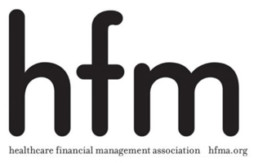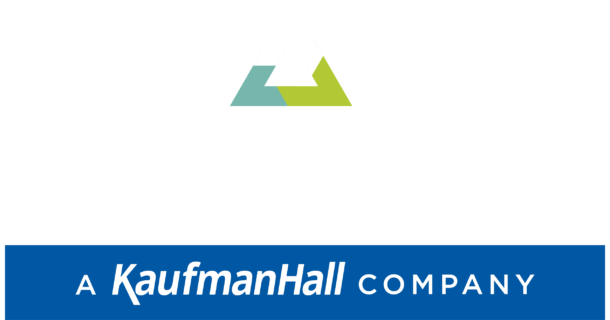
Reducing Pharmacy Costs Through Improved Utilization
Feature: Cinda Bates, Barton S. Richards
By identifying unnecessary spend and changing expensive clinical practice patterns, a four-hospital system achieved nearly $2 million in pharmacy cost savings.
In 2011, faced with steadily increasing costs, Trinity Regional Health System in Rock Island, Ill., began a comprehensive assessment of its pharmacy operations, looking for opportunities to reduce pharmacy spend and optimize payment.The assessment uncovered an opportunity for Trinity to save $1.5 million to $2 million by changing practices related to medication utilization. Trinity’s broad goal for achieving these savings was to use less expensive medications and lower quantities of medications, where possible. To accomplish this goal, Trinity used data derived from benchmarking analyses to raise physician’s awareness of inefficient utilization practices, such as prescribing high-cost medications, and persuade them to refrain from such practices. As a result of this effort, the physicians began using loser-cost drugs and making changes in drug administration and dosage practices, enabling Trinity to save $1.9 million in 2012, or 14 percent of its pharmacy budget. Today, the health system is developing additional pharmacy improvement initiatives to reduce pharmacy costs by another $1.2 million in 2013.
Analyzing Opportunities for Cost Reduction.
Trinity Regional Health System is a four-hospital system that is part of West Des Moines-based UnityPoint Health. Trinity had historically experienced annual increases of 3 percent in its pharmacy department. However, changes in patient mix and acuity levels in high-cost areas, such as oncology, were expected to increase costs by 6 percent in 2012.
The assessment of Trinity’s pharmacy department included a review of inventory, organizational structure, and processes. Again, the focus was on identifying opportunities for savings that could be achieved by improving medication utilization practices across clinical departments. The analysis benchmarked drug expenditures per adjusted inpatient day for each of Trinity’s clinical areas against the same expenditures for a peer group of hospitals. Analyses of areas such as cardiology and oncology, in particular, disclosed significant opportunities for savings.
A medication utilization team was tasked with pinpointing the case of the higher-than-average costs in the clinical areas identifying ways to reduce costs. The team included two pharmacists, who were responsible for identifying the opportunities and performing the majority of the project work. Representatives from the finance and revenue cycle departments tracked and measured the results of initiatives and addressed questions about payment.
The medication utilization team also worked with clinical administrators, such as the chief medical and nursing officers, to designate physician champions and key stakeholders who could use their influence with their colleagues to win support for implementing cost-saving strategies.
Implementing Changes
The utilization team found that an expensive chemotherapy drug, costing $2,665 per dose, could be replaced with a less expensive, but clinically equivalent drug that cost just $249 per dose. Trinity’s chief medical officer, Paul McLoone, MD, and associate chief medical officer, Ahmed Okba, MD, recommended an oncologist who might be willing to be the champion for the initiative. McLoone and the utilization team engaged the physician in a discussion of the benefits of switching to the less expensive medication, supporting their position with third-party benchmarking data showing positive clinical experience with the lower-cost medication.
Persuaded by the data, the oncologist helped to develop protocols for using the less expensive medication. As a result, utilization of the more expensive agent decreased for an annualized savings of more than $100,000.
Other initiatives focused on drug administration and dosage. For example, Trinity had been using standard industry practice for a particular antibiotic, which involves infusing the product into a patient for one hour every six hours. Studies have shown, however, that infusing the antibiotic over a four-hour period every eight hours results in less product used and improved outcomes. The utilization team presented proposed changes in the use of this antibiotic to its Pharmacy and Therapeutics Committee for approval and then worked to educate Trinity nurses on the benefits of and steps involved in changing the infusion process (such as changing the type of bags that held the medication). The new infusion process reduced use of the antibiotic and achieved an annualized savings of $165,000.
In addition to changing from a regular to an extended infusion of the antibiotic, Trinity switched to mixing the antibiotic with a solution onsite at the pharmacy, rather than buying the premixed medication in frozen form, a more expensive process that increased costs by 50 percent.
Over the course of a year, the Trinity team implemented 58 medication utilization initiatives, beginning in November 2011. Trinity saved $600,000 in the first six months of 2012; total real savings reached $1.9 million by the end of the year, with annualized savings adding up to $2.2 million.
Building Momentum with Physician Stakeholders
Once cost savings opportunities and solutions were identified, focus shifted to working with physicians whose support was critical to achieving cost savings. Any barriers presented by physicians could impede success.
Data obtained from benchmarking analyses and published medical studies were presented in different ways. Physicians who were known to be receptive to new ideas were approached first and armed with data they could then take to their wider group of colleagues for discussion. McLoone was instrumental in identifying both physician champions and those who might be less receptive to change. The physician he recommended to champion oncology initiatives, for example, had completed a training program for physician leaders offered through Trinity.
An environment of cooperation already existed between physicians and Trinity because of the medical groups’ prior experience with incentive programs negotiated through co-management and management agreements. Consequently, physicians were open to understanding the need for cost reductions. Nonetheless, their real interest rested in the clinical efficacy of the proposed changes in medication utilization.
Initially, the utilization team’s project leader met with clinical department heads to explain proposed changes in the formulary and prescribing patterns. Meanwhile, McLoone reviewed and vetted research used to support proposed changes and then took part in follow-up clinical discussions with physician groups.
A key factor in gaining buy-in was the way data were presented- with recommendations open to give-and-take discussion that centered on how a medication change would affect the way physicians practice.
Physicians readily adopted initiatives that were well-supported by data and made sense clinically. They also sometimes offered their own suggestions for improvement beyond the recommendations of the utilization team. For example, after learning that an expensive blood thinning agent was being used even in cases where a less expensive agent was clinically appropriate, cardiologists developed guidelines for medication use in the cardiac catheterization lab, specifically noting when the more expensive agents should be used. This initiative led to an annual savings of $95,000.
Working with Suppliers to Reduce Costs
The challenged that surfaced within the medication utilization project were not solely clinical. Contractual issues also threatened to impede progress or stop it altogether.
Because a majority of Trinity’s contracting is conducted at the system level, cost reduction initiatives within the contracting arena affect not only Trinity hospitals, but also hospitals throughout UnityPoint Health. Gaining organizationwide approval for such initiatives and renegotiating contracts have therefore presented additional challenges.
For example, in the case of the premixed antibiotic, Trinity was contractually required to purchase the mixture in frozen form. To be released from this obligation, Trinity had to agree to purchase other products from the supplier in place of the premixed solution. This compromise still resulted in net annual savings of $94,000 for the remaining term of the contract.
Much the way gaining buy-in from physicians requires data, gaining systemwide buy-in of a proposed change requires a coordinated communication plan to inform pharmacy staff and physicians across the organization of the cost savings opportunities and persuade them to accept the change. Presenting the results of Trinity’s successful initiatives has helped to garner support. A pharmacy affinity team. Comprising representative pharmacist members from across UnityPoint Health, collaborates on various issues, including contracting decisions.
The introduction of more generic medications into the market has provided additional opportunities for savings. In one instance, Trinity would have benefited from a change from a branded agent within an antibiotic class to a generic antibiotic with comparable efficacy within the same therapeutic class, but the change would have threatened other affiliated hospitals within UnityPoint Health with the loss of volume discounts made possible through use of the branded product. So the introduction of the less costly generic antibiotic presented the organization’s hospitals with a difficult choice between opportunities for savings: whether to adopt the generic antibiotic or go with the previously contracted brand-name product.
The cost advantage needed to be reevaluated in the face of the introduction of the lower-priced generic product to provide all affiliate hospitals with the opportunity to evaluate savings if they decided to make the change. The cost savings that Trinity reaped as a result of this particular initiative were $166,000 for 2012.
Additional Improvement Opportunities
Since implementing these cost reduction initiatives, Trinity has embarked upon additional pharmacy improvement projects focusing on such areas as utilization, contracting, and payment. Initiatives include the following.
Patient assistance program.
Trinity is developing a structured program, staffed by an FTE, for providing medications to qualified indigent patients to be replenished by the manufacturer at no cost. Using software to identify eligible patients, the patient assistance advocate will work with clinicians and various departments, such as finance and case management, to complete the application required for patients to be accepted into the program. The targeted implementation date is July 1, 2012. The program is to be disseminated throughout the system wherever there is benefit for patients.
Contracting discounts with manufacturers.
In addition to contracting discounts provided through the group purchasing organization, Trinity has been able to receive discounts and avoid annual price increases by complying with additional manufacturer terms, such as purchasing products in bulk based on previous purchasing historical volumes. These contracting discounts, where identified, are coordinated with the group purchasing organization and offered to other affiliates throughout the system for additional value.
Fast-tracking chemotherapy agents.
Trinity is developing a subcommittee of Pharmacy and Therapeutics Committee representatives to address physician requests for chemotherapy agents that are new on the market. The subcommittee will assess payment for the new agents, help to educate pharmacy and nursing staff, and give patients a better indication of their costs for the new agents. This program is targeted for implementation on July 1, 2013. The program will greatly assist the reimbursement and revenue cycle, especially for the infusion center with increasing patient volume in that setting.
Such initiatives are projected to save Trinity an additional $1.2 million in 2013, based on annualized figures. In addition, Trinity has saved $780,000 on the existing initiatives in the first quarter and an additional $169,000 on initiatives like the above which were targeted for 2012. This projection is in addition to the sustained savings from the initial medication utilization project.
Coordinated Efforts
The sum of multiple initiatives in pharmacy can have a substantial impact on the bottom line. However, managing so many opportunities requires a coordinated effort that begins with getting key stakeholders, including administrative and clinical, to understand the cost implications of pharmacy and their roles in driving and sustaining change.
In Trinity’s initiative, finance and revenue cycle also have played key roles in sustaining results. Each month, the finance department provides the medication utilization team with savings reports on each initiative so the team can track progress and quickly address backward trends. For example, if a report shows that a high-cost drug that was at one time replaced has been repurchased, the utilization team can investigate the reason for the repurchase and take any steps deemed necessary to ensure compliance with the new utilization protocols.
Although pharmacy presents ample ongoing opportunities for savings, these opportunities will differ significantly for each hospital and health system. That said, for all organizations, there is ongoing opportunity to evaluate high-cost drugs and treatments and explore the potential for lower-cost alternatives. These initiatives prove to be well worth the effort.
